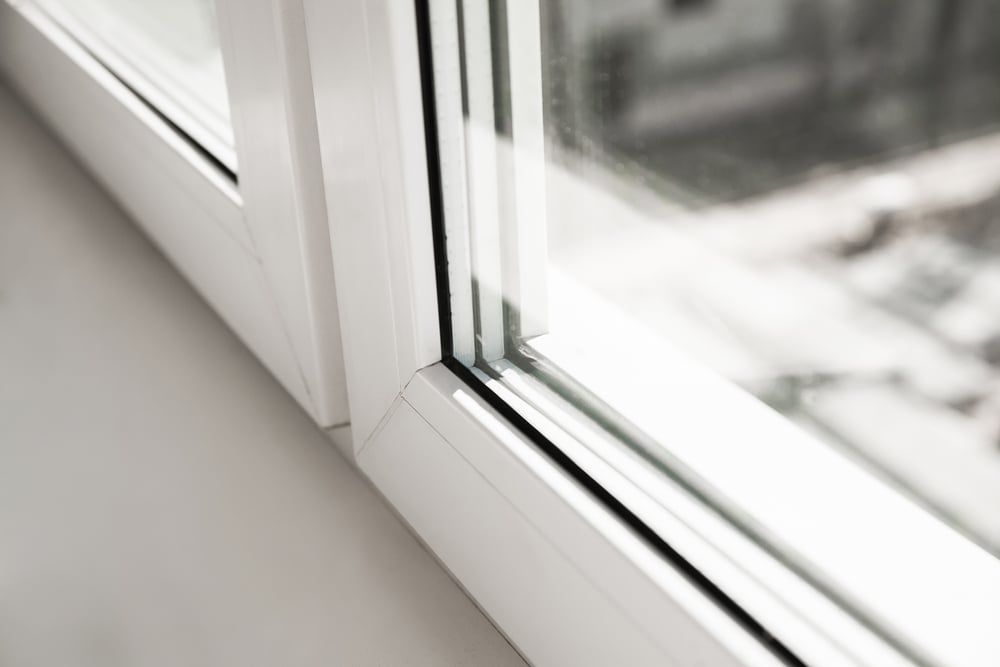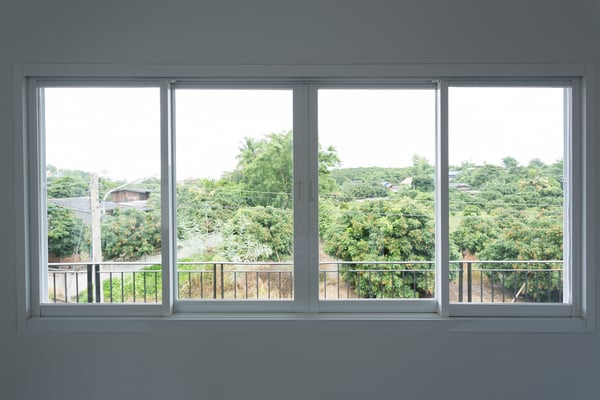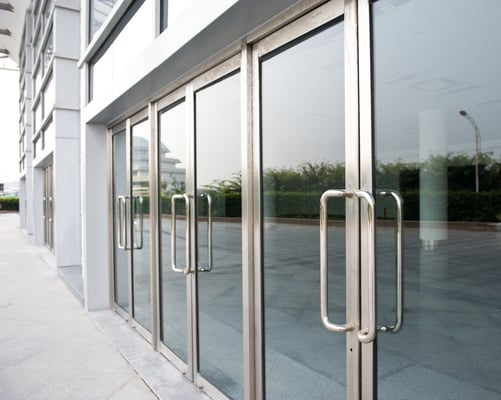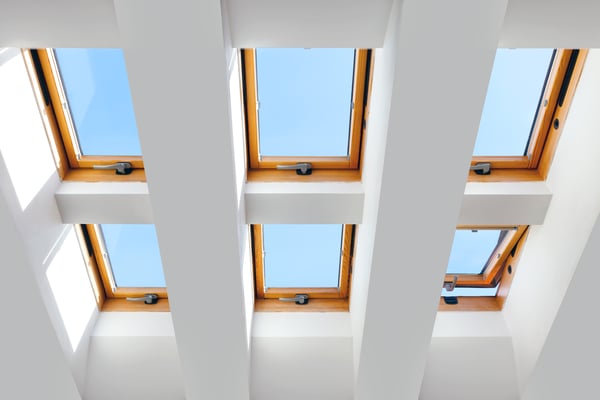Main Types of Fenestration Systems for Buildings

Fenestration systems refer to all openings in the building envelope, including curtain walls, windows, doors, and skylights. Fenestration is normally viewed as an aesthetic feature, but it also affects building performance. For example, a smart window placement can increase natural lighting, reducing the usage of lighting fixtures and saving electricity. Fenestration can also be used for passive solar heating, which reduces the workload on space heating systems.
This article provides an overview of the main types of fenestration, and common glazing options used in commercial buildings.
Curtain Walls

Curtain walls are thin and they typically use aluminum frames, containing in-fills of glass, metal panels, or thin stone. The framing is attached to the building structure, but it does not carry any floor or roof loads. These walls are subjected mostly to wind and gravity loads, which are transferred to the building structure at the floor line. Curtain walls can vary from manufacturers’ standard catalog systems to specialized custom designs.
Curtain walls can be classified into two categories based on their fabrication and installation method: stick systems and modular systems.
- Stick systems: The curtain wall frame, also known as mullions, and the glass or panels are installed piece by piece.
- Modular system: The curtain wall is made of large units (modules) that are assembled and glazed in the factory, and then assembled on-site.
Consider that curtain walls usually comprise only part of a building’s wall system. To install a curtain wall successfully, careful integration is crucial with adjacent elements like roofs, claddings, and wall bases.
Improve the performance of your building envelope, save energy, and reduce emissions.
Windows

Windows are wall openings, usually fitted with glass frames to admit light and air, while providing a view for occupants. Some common window frame materials include aluminum, fiberglass, vinyl, steel, wood, and PVC. Aluminum frames are the most popular, and they provide design flexibility by being available in many shapes, designs, and colors. In residential construction, wood, vinyl, and fiberglass frames are the most common.
Windows can be fixed, operable, or a combination of both.
- Fixed windows consist of a frame with an infill sealed together. They offer better resistance to air and water infiltration and also require less maintenance.
- Operable windows allow natural ventilation. They consist of a frame and sash that are sealed by weatherstrips, in addition to the infill being sealed to the sash.
Operable windows can be broadly classified into sliding seal or compression seal windows. Compression seal windows tend to provide better resistance to air and water since they reduce friction and wear of the weatherstripping.
Exterior Doors

Doors serve as the main entryways and exits in buildings, and they can be used as public accesses or private service entrances. There are three main types of doors:
- Revolving doors, serving entrance and exit functions.
- Swing doors, serving entrance and exit functions.
- Industrial doors, serving material handling and security functions.
Some commonly used door materials include steel, aluminum, wood, and glass. Doors used in commercial storefronts typically use aluminum frames with glass in-fill or all-glass. Industrial doors are used for material handling, not pedestrian access, and their main function is to provide security. This system is not frequently designed for building envelope performance, and security grates are typically installed in commercial applications that require public access.
Skylights

Skylights are also known as sloped glazing systems, and they are used to provide daylighting. Other than providing energy savings, daylight has a positive psychological effect, according to the WELL building standard. Skylights are engineered systems, which are assembled from standard or customized extrusions provided by the manufacturer. Skylights have two basic components, which are the supporting members and the infill panels.
There are several design considerations regarding skylights. For example, these elements experience a significant solar heat gain during summer and heat loss during winter. For this reason, thermal considerations must be accounted for in HVAC design.
Another important aspect is moisture protection since skylights are part of roofs. They are exposed to large amounts of rainwater, and much more susceptible to water leakage compared with vertical fenestration. A drainage system must be incorporated, to collect leakage and condensation, and rainwater harvesting is also a viable option.
Glazing

Glass is a common construction material, which has been used for centuries to provide daylight and weather protection in buildings. The following are some of the most common types of glass:
- Architectural glass is available in three different strength categories: annealed, heat-strengthened, and fully tempered glass - ordered from the least to the highest strength and durability.
- Laminated glass consists of two or more glass surfaces that have been adhered together with a plastic interlayer, providing good thermal and acoustic insulation.
- Coated glass is covered with low-emissivity coatings to improve thermal performance.
- The tinted glass contains minerals that color the glass, promoting the absorption of light.
- Insulating glass units consist of two or more layers of glass, separated with spacers that enclose a sealed air space with desiccant. This space reduces heat transfer, providing superior thermal performance and good acoustic properties.
In new constructions, double-pane or triple-pane glass can greatly reduce heat transfer through the building envelope. Compared with an uncoated and single-pane glass window, a high-efficiency window can reduce heat gain and heat loss by over 70%.

Anuj Srivastava
Anuj Srivastava is a principal partner at NY Engineers. He is known for his MEP franchise market knowledge. Anuj is currently leading a team of 100+ MEP/FP engineers and has successfully led over 1500 franchise projects in the US.
Join 15,000+ Fellow Architects and Contractors
Get expert engineering tips straight to your inbox. Subscribe to the NY Engineers Blog below.



